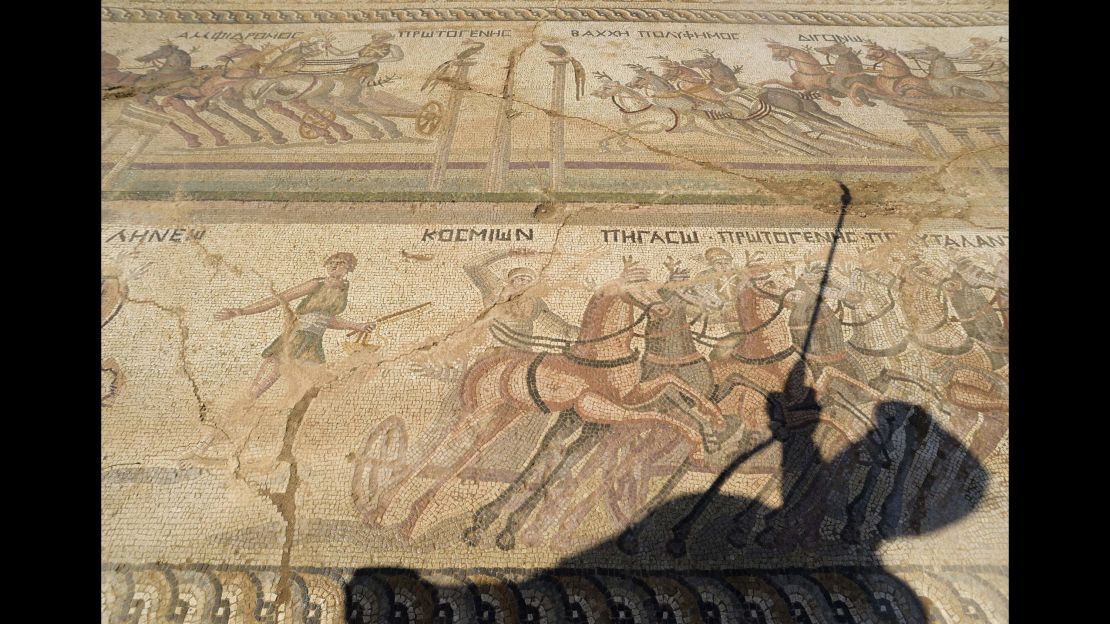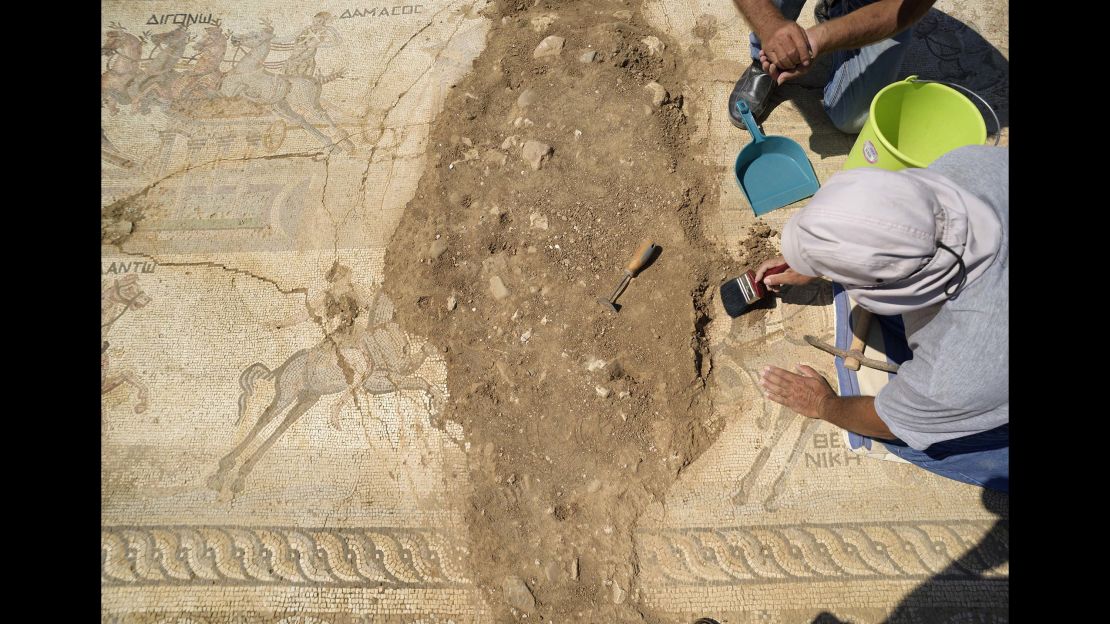Story highlights
The mosaic is large; it's 36 feet long and 13 feet wide
Archaeologists are still digging it up
Archaeologist Fryni Hadjichristofi knew she may have run up on something special when she noticed an oddity under a road near the site where she was excavating. She just didn’t know how special.
What Hadjichristofi and her crew uncovered was a rare 4th century mosaic, the only one of its type found in Cyprus and one of very few found in the world.
It depicts a chariot race – with four chariots, their drivers and horses – in the hippodrome, ancient Rome’s racing venue.

Hadjichristofi, an archaeologist with Cyprus’ Department of Antiquities, and her seven-person crew found the mosaic last year while working on a site about 20 miles from Nicosia, Cyprus’ capital.
Something big
When they first uncovered a small bit of the mosaic, they couldn’t immediately do a full-scale excavation because of where it was.
“We noticed that there was something under the road,” Hadjichristofi told CNN. “But we really didn’t suspect we had this important thing underneath.”
Eventually the road was removed to reveal the stunning mosaic, incredibly well preserved and measuring 36 feet long and 13 feet wide. But that’s not all of it; there’s still work to do to dig out the rest of it, Hadjichristofi said.

The mosaic may have been part of the floor in a villa belonging to a wealthy person during the days the Romans ruled the island.
One of the reasons the mosaic is such an archaeological find is it because of what it shows.
“To have the whole (chariot) race in the hippodrome represented in a mosaic makes this very rare indeed,” she said.
Names in Greek
The mosaic shows four chariots with horses and a driver, or charioteer, and appears to show four phrases of a race. There’s Greek lettering above each chariot. That’s important too.
“Each chariot is accompanied by two names above each chariot, written in Greek,” Hadjichristofi said. “One is the name of a charioteer and the other is the name of a horse. It is rare to have this.”
The names usually express some kind of special characteristic about the chariot driver and the horse.
Hadjichristofi predicts it’ll take about two more years of work to dig out all of the mosaic, because they can’t work in the rain or during the winter months. But since the mosaic is in good condition, restoration work won’t be difficult and it’ll then be ready to be viewed by the public.




